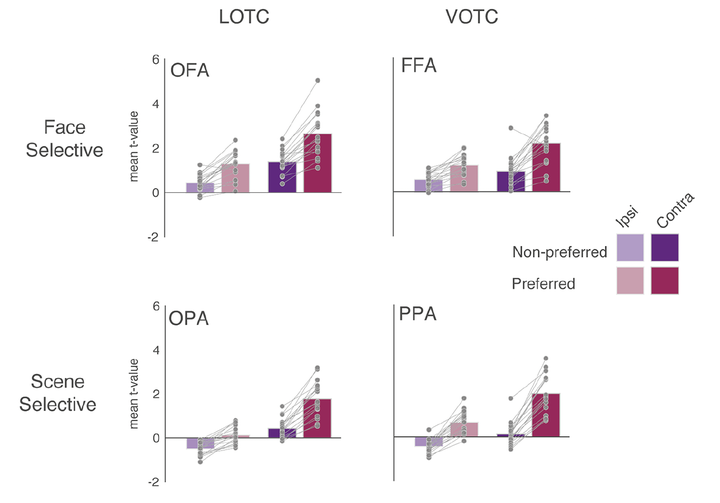
Abstract
Human visual cortex is organised broadly according to two major principles: retinotopy (the spatial mapping of the retina in cortex) and category-selectivity (preferential responses to specific categories of stimuli). Historically, these principles were considered anatomically separate, with retinotopy restricted to the occipital cortex and category-selectivity emerging in the lateral-occipital and ventral-temporal cortex. However, recent studies show that category-selective regions exhibit systematic retinotopic biases, for example exhibiting stronger activation for stimuli presented in the contra- compared to the ipsilateral visual field. It is unclear, however, whether responses within category-selective regions are more strongly driven by retinotopic location or by category preference, and if there are systematic differences between category-selective regions in the relative strengths of these preferences. Here, we directly compare contralateral and category preferences by measur- ing fMRI responses to scene and face stimuli presented in the left or right visual field and computing two bias indices: a contralateral bias (response to the contralateral minus ipsilateral visual field) and a face/scene bias (preferred response to scenes compared to faces, or vice versa). We compare these biases within and between scene- and face-selective regions and across the lateral and ventral surfaces of the visual cortex more broadly. We find an interaction between surface and bias: lateral surface regions show a stronger contralateral than face/scene bias, whilst ventral surface regions show the opposite. These effects are robust across and within subjects, and appear to reflect large-scale, smoothly varying gradients. Together, these findings support distinct functional roles for the lateral and ventral visual cortex in terms of the relative importance of the spatial location of stimuli during visual information processing.